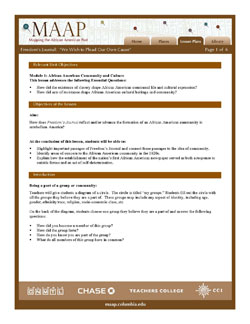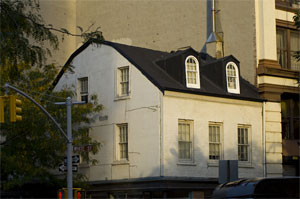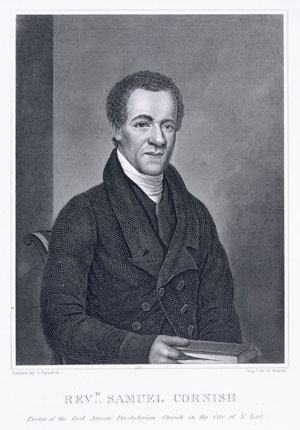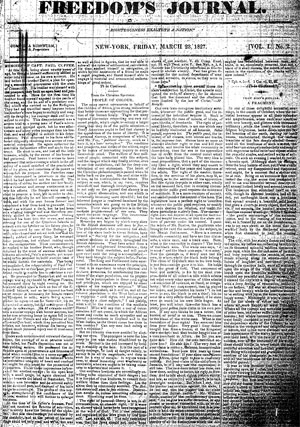Teaching NYC's African American History via the Web
Video, audio, historic maps and more from across the five boroughs
In February, public schools in
Funded by a grant from JP Morgan Chase, MAAP will be officially launched in late February or early March with a live demonstration for teachers at
“A critically important strategy in involving young students in the study of history is to make that history come alive,” says Margaret Crocco, Professor of Social Studies and Education, part of the Teachers College team that developed the MAAP curriculum. “MAAP does this by creating a visual link between the city they live in today and the world that existed 150 years ago and even further back. That’s particularly important in dealing with the complex history of African Americans, because the teacher faces the dual challenge of, on the one hand, making students understand that slavery was once a present reality right here in New York, and on the other, bringing out aspects of the African American experience that are too often ignored—the stories of hardship, struggle, and accomplishment that need to be more widely known and taught.”
“MAAP is an innovative teaching tool with great potential to reach a diverse audience of students and spark their interest in a critically important area of American and New York City history,” says Anna Commitante, the New York City Department of Education’s Director for English Language Arts, Social Studies, Gifted/Talented & Enrichment.
The interactive MAAP site will ultimately showcase 52 historic sites in New York City, including both the familiar (the African Burial Ground, Draft Riots, Abyssinian Baptist Church, Five Points and the Schomburg Library) and the less well known (African Grove Theater, Colored Orphan’s Asylum, Hughson’s Tavern). For the casual user, MAAP will be as simple as clicking on a time period—say 1800–1899; clicking on a location on a map of the City (say, Leonard Street, west of Broadway); and reading entries such as this one about Freedom’s Journal, the first newspaper owned and published by black Americans:
“For most of the black community, reading came only after freedom, since it had been forbidden under slavery. To read black voices for the first time was powerful. On the front page of the new paper the editors wrote: “We wish to plead our own cause. Too long have others spoken for us.” Inside were stories about slavery, lynchings, and social justice. The paper also covered international news of special interest to the community, such as events in
“For two years Freedom’s Journal served a community of 300,000 African Americans in the North. It was sent to 11 states and the
For teachers, the curriculum and lesson plans—developed by students and graduates of the TC Program in Social Studies under the guidance of Crocco and her fellow TC faculty member William Gaudelli—are related to each site and adapted for students in different grades. The lessons are organized into modules organized around the following themes:
• The development of the African American community in
• Resistance and self-determination in the face of slavery and discrimination
• African American contributions to building
By February 2008, lessons will have been designed for 12 sites, for use by middle and high school teachers, along with one-page adaptations for elementary teachers.
The MAAP website will also act as a portal to glossaries of concepts and terms, profiles of historical events and figures, videotaped commentary by faculty experts, film and music clips, and historical photographs and artwork.
Eventually, a printed curriculum will be produced to be distributed free of charge to 1,000 teachers in
The Web site, offered free of charge to teachers, is also open to the public at no cost, and will be actively promoted to tourists. It can be visited at http://maap.columbia.edu/
“Web-based learning environments such as MAAP do two things—they universalize access so that all the people in the world can simultaneously engage the same intellectual object at no cost, and they offer students new forms of interactive engagement, consistent with contemporary active learning philosophies,” says Frank Moretti, executive director of the Columbia Center for New Media Teaching and Learning, which in 10 years has developed approximately 200 large-scale online learning sites for thousands of scholars and faculty members.
“Chase is very proud to sponsor ‘Mapping the African American Past’,” said Kimberly Davis, President of JPMorgan Chase Foundation. “Along with our support for the African Burial Ground,
Published Wednesday, Feb. 13, 2008



